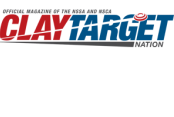Point of Aim
My shotgun shoots to the point of aim. However, this doesn’t build the skill of proper gun mount and the resulting desire of the firearm shooting where I look. What procedure would you suggest for practice that promotes hitting where you are looking, specifically when using a patterning board?
First of all, let’s define something. The term “point of aim” is a misnomer but is commonly used in the shotgun world to mean the point at which the shooter is applying visual focus. We don’t aim a shotgun unless we are shooting in a tactical setting or at turkeys. When we say that a particular shotgun “shoots to the point of aim,” it means that the point of impact is on the point of visual focus. So a shotgun that “shoots to the point of aim” means that the shotgun shoots where the shooter is looking (not aiming). Aiming implies a conscious visual alignment of the sights, and this is no way to check a shotgun’s fit.
When evaluating the fit of a particular shotgun and its fit to an individual shooter, a patterning board can be a useful tool. When the gun fits perfectly, the point of impact (or center of the shot pattern) is on or slightly above the point of aim (aka point of look). In other words, the center of the two-dimensional shot pattern on the patterning board should be right on top of, or slightly above, the point on which the shooter is focused visually. When evaluating proper gun fit using a patterning board, it is important that the shooter focus on a particular spot on the patterning board (the point of aim) as the shot is executed. In so doing, the shooter replicates the way he engages moving targets by focusing exclusively on the target with no conscious awareness of the barrel-target relationship.
Having a shooter aim a shotgun at the point of aim is incorrect, should never be used to evaluate gun fit on a patterning board, and will always make the gun’s fit look better than reality. A shotgun’s fit must be evaluated based on a natural move and mount of the shotgun to the target. Aiming a shotgun at a patterning board is only useful when examining pattern density and choke performance.
Don Currie is NSCA’s Chief Instructor, an Orvis Wingshooting School instructor, and Master Class competitor. To get free shooting tips and videos, sign up for his monthly newsletter. You can also see more tips from Currie at www.doncurrie.com.

